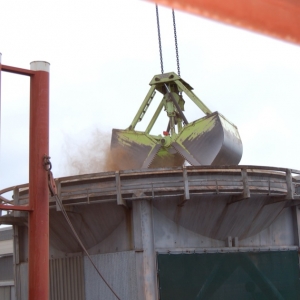In fact, most have probably never heard of phosphine. As Mike Goss, biosecurity manager at Genera Limited explains, it is used as a fumigant in bulk commodities, including palm kernel meal, to reduce the biosecurity risk before importation.
Despite what some farmers may have heard, the risk of any phosphine residue on PK meal is negligible, says Goss.
"The vessels are fumigated at the port of origin, the phosphine reacts with moisture and releases over about a 48 hour period," says Goss.
The phosphine is usually applied in pellet form at a very low concentration – usually 2g per square metre – and it breaks down quickly.
"There is no residue risk to livestock at all by the time the boat arrives [in New Zealand]."
Taking into account the fact that phosphine aerates rapidly from foodstuffs, and that a residue of 0.1 mg/kg in a raw cereal would yield a much lower residue in bread or other food ready for consumption, the FAO/WHO joint meeting (1967a) considered that there was no necessity to establish a figure for acceptable daily intake. For cereals in international trade a tolerance of 0.1 mg/kg expressed as PH3 is recommended.
The Ministry for Primary Industries says fumigation of all PK meal imports is part of its recently tightened biosecurity standards for the imported feed. It requires all loose, bulk stock feed consignments be fumigated prior to shipping, either with phosphine or methyl bromide.
According to the Food and Agriculture Organization of the United Nations (FAO), phosphine is "a low molecular weight, low boiling point compound that diffuses rapidly and penetrates deeply into materials, such as large bulks of grain or tightly packed materials."
Phosphine has been used for many years to control insects in a wide range of plant products throughout the world. To date there has been no report of appreciable adverse effects from recommended treatments.
The FAO says unchanged phosphine does not remain in fumigated commodities in appreciable amounts. "Tolerance levels of 0.1 mg/kg for raw grains and 0.01 mg/kg for processed foods have been established by many agencies and numerous investigations have shown that the gas desorbs rapidly during aeration to levels well below the tolerances."









